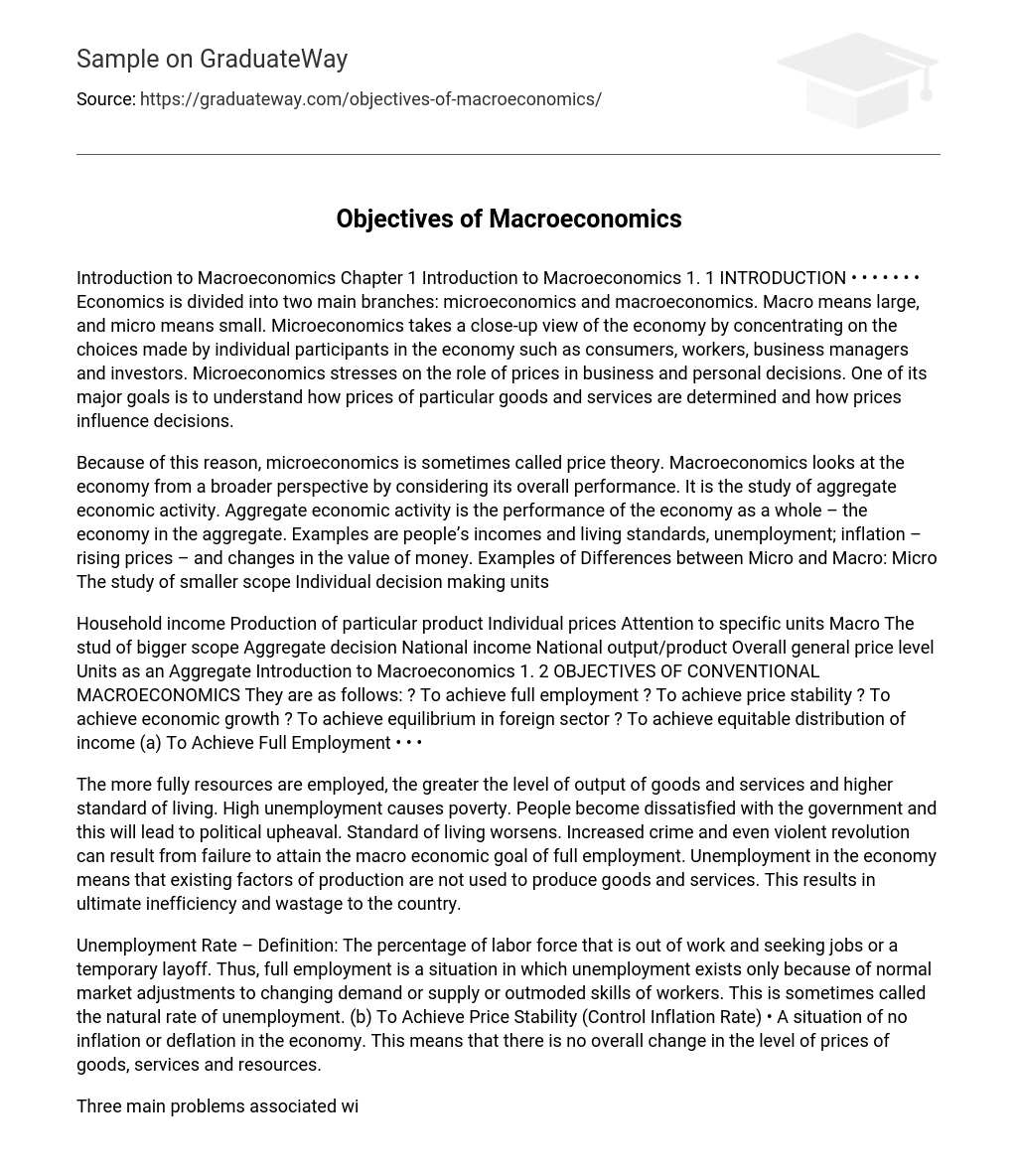Economics is divided into two main branches: microeconomics and macroeconomics. Macro means large, and micro means small. Microeconomics takes a close-up view of the economy by concentrating on the choices made by individual participants in the economy such as consumers, workers, business managers and investors. Microeconomics stresses on the role of prices in business and personal decisions. One of its major goals is to understand how prices of particular goods and services are determined and how prices influence decisions.
Because of this reason, microeconomics is sometimes called price theory. Macroeconomics looks at the economy from a broader perspective by considering its overall performance. It is the study of aggregate economic activity. Aggregate economic activity is the performance of the economy as a whole – the economy in the aggregate. Examples are people’s incomes and living standards, unemployment; inflation – rising prices – and changes in the value of money.
The more fully resources are employed, the greater the level of output of goods and services and higher standard of living. High unemployment causes poverty. People become dissatisfied with the government and this will lead to political upheaval. Standard of living worsens. Increased crime and even violent revolution can result from failure to attain the macro economic goal of full employment. Unemployment in the economy means that existing factors of production are not used to produce goods and services. This results in ultimate inefficiency and wastage to the country.
Based on these philosophic foundations, some of the features of an Islamic economic system can thus be summarized as follows:
- All economic decision undertaken as to earn the approval of Allah.
- The objectives of the economic agents is to achieve al-falah (definition: Prosperity/success in this world and in the hereafter) rather that maximizing one’s Own self-interest.
- The concept of private ownership in an Islamic Society is in line with man’s role as the vicegerent of God.
- An Islamic economy is different from the other economic system as it calls for institutional set up and a unique government to achieve the goals of the Islamic society.
- Haram goods and services are not produced in an Islamic economy. Thus, the consumption basket of a Muslim is smaller than that of non-Muslim.
An Islamic government must ensure that economic growth results in a “maximum” contribution to the creation of new employment opportunities. However, additional employment created must be in the long run & be generated in a technically efficient fashion. Thus, research must be done to evolve a suitable technology in line with each individual country’s resource endowment. Education with emphasized on technology and scientific knowledge should be implemented.
TOOLS OF STABILIZATION POLICY
- Fiscal Policy – Uses variations in the levels of government purchases of goods and services (Government expenditure) and taxes to influence the state of the economy.
- Monetary Policy – Uses variations in the nation’s money supply and in interest rates to influence the state of the economy.
- Direct Control – Are specific laws, rules and regulations designed to modify the way people behave. Direct controls stem form laws passed by the government. Stabilization Policy Goals The goals of stabilization policy are called macroeconomics policy targets.





